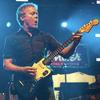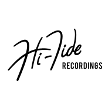Reef-Ranger

Joined: Mar 14, 2009
Posts: 60
Oceania
|

Posted on Aug 17 2012 08:32 PM
Greetings All,
Anyone out there have direct experience rebuilding or refinishing '62 Reissue (AVRI) Jaguars? In particular, I'm looking for someone with personal experience soldering the many ground connections to the various copper/bronze shield plates found in the bottom of each of the routings.
Anybody?
Thank you.
|
tubeswell

Joined: Sep 24, 2011
Posts: 1424
Wellington, NZ






|

Posted on Aug 18 2012 01:35 PM
Use a high-powered (60-80W) iron and rosin-cored 60/40ish leaded solder
— He who dies with the most tubes... wins
Surf Daddies
|
Reef-Ranger

Joined: Mar 14, 2009
Posts: 60
Oceania
|

Posted on Aug 18 2012 04:06 PM
Thanks for the feedback.
The soldering iron I'm using is a professional-grade unit with temperature control all the way to 900 degree F, so it melts the solder immediately, but the copper/bronze material used for the shielding is still getting quite hot before a reasonably sized pool of solder can be sufficiently adhered to the surface of the metal, and I don't know how to avoid it.
If you're familiar with Jaguars, the network of ground wires connecting the different shields can all be readily soldered to the surface of the shields before the shields themselves are dropped down into their respective routings, but the Fender factory used small steel wedges driven into the wood at the bottom of the routings (near the corners of each shield) to hold the shields in-place, and those wedges are then soldered to the shields. That's the part that concerns me most - soldering those wedges into place and the heat that will likely penetrate through the metal to the thin amount of wood remaining and the fresh paint on its opposite side.
I'm beginning to wonder if I might be better off to avoid the steel wedges altogether and simply drop a dollop or two of contact cement or other glue into each routing to hold the shields in-place rather than soldering them at each end. In other words, it seems like steel wedges and soldering just to hold the shields in-place is an overkill.
|
SlacktoneDave

Joined: Jul 01, 2006
Posts: 657


|

Posted on Aug 18 2012 08:07 PM
Those are called "glazier points". Fender has always used them to secure the brass shields to the bottom of the cavities. I've not had a problem soldering to the plates when mounted. If you want to be cautious, remove them to solder the wires. The points don't need to be soldered. Be sure all of the plates are connected to ground. Check with a Volt meter.
~dave
P.S.
If you got to page 3 and 4 at www.slackercaster.com you can see the factory made brass plates that I fit into a jaguar I was building. You can see where the wires were pre-soldered.
Last edited: Aug 18, 2012 20:13:27
|
tubeswell

Joined: Sep 24, 2011
Posts: 1424
Wellington, NZ






|

Posted on Aug 18 2012 08:18 PM
Its not the temperature of the iron, its the power that counts. A high-power iron does more work with the heat, because the tip has more thermal mass. You can have a really hot iron with a piddly tip and as soon as you touch it to a big hunk of cold metal, the heat dissipates too quickly for solder to melt.
— He who dies with the most tubes... wins
Surf Daddies
|
Reef-Ranger

Joined: Mar 14, 2009
Posts: 60
Oceania
|

Posted on Aug 19 2012 01:50 PM
Many thanx, guys. I appreciate the assistance.
Dave: You've hit the nail right on the head. Its the "glazer points", and the glazer points alone, that have me most concerned. The ground wires can all be readily soldered outside of the routings, no worries.
However, its going to take a lot of heat (i.e., an extended period of time with the soldering iron in direct contact with the shielding) to get the solder to flow properly (and adhere) between the steel wedges and the shielding plates themselves (i.e., the glazer points) - enough time and heat to potential blister the paint, I fear. And I think you're right - in principle, those glazer points do NOT necessarily 'need' to be soldered (i.e., they serve no electronic function). That's kinda why I'm considering using a simple drop or two of contact cement or other glue on the backside of each shield?
Last edited: Aug 19, 2012 13:52:21
|
SlacktoneDave

Joined: Jul 01, 2006
Posts: 657


|

Posted on Aug 19 2012 02:53 PM
In all of my Jaguars, { www.slackercaster.com} I did not us glazier points. I just pushed the plates into the bottom of the cavity and they just stayed there. You do not have to solder the plates to the glazier points if you decide to use them.~dave
|
Reef-Ranger

Joined: Mar 14, 2009
Posts: 60
Oceania
|

Posted on Aug 19 2012 04:34 PM
Thanks, Dave. Unfortunately, the shields that I have here are a bit too loose (in terms of clearance on their edges) to use without securing them somehow (i.e., soldered glazers, unsoldered glazers or glue).
However, given my concerns over paint and the heat of soldering, I think I'll opt for unsoldered glazers - if driven into the wood sufficiently at the corners, they should be perfectly fine without soldering.
By-the-way, if you're guitarist Dave Wronski of Slacktone fame, then I'm exceedingly grateful to you for your time and insights, and for what its worth, I'm also a huge-huge fan! In fact, your tune "Longboard Legato" played a key role in why I bought this particular '62 AVRI Jag (my first Jag). Truth is, I've spent the past ten-years trying to master that fantastic little tune and a number of other jewels including a few great pieces by Miles Corbin/The Aqua Velvets.
All the best.
Da Reef Rain-jah
|






























